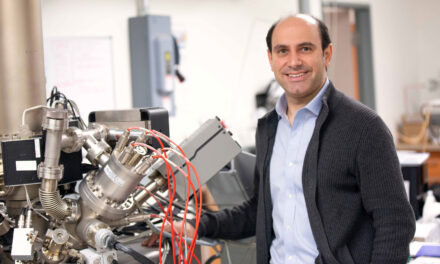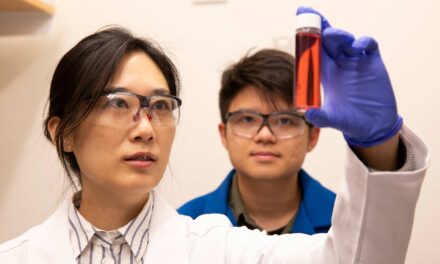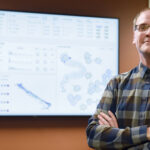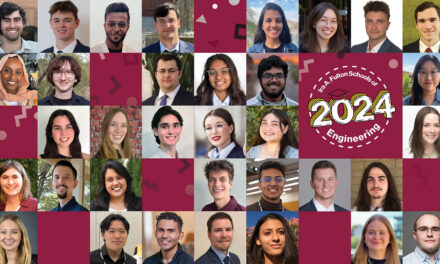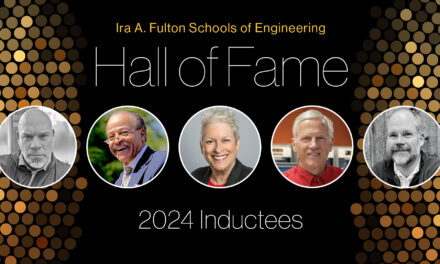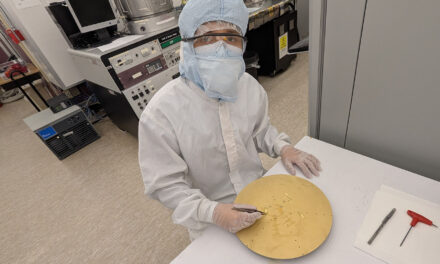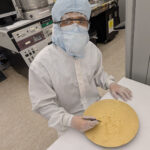
Catalyzing crystal clarity
Nannenga wins Etter Award for electron diffraction technique
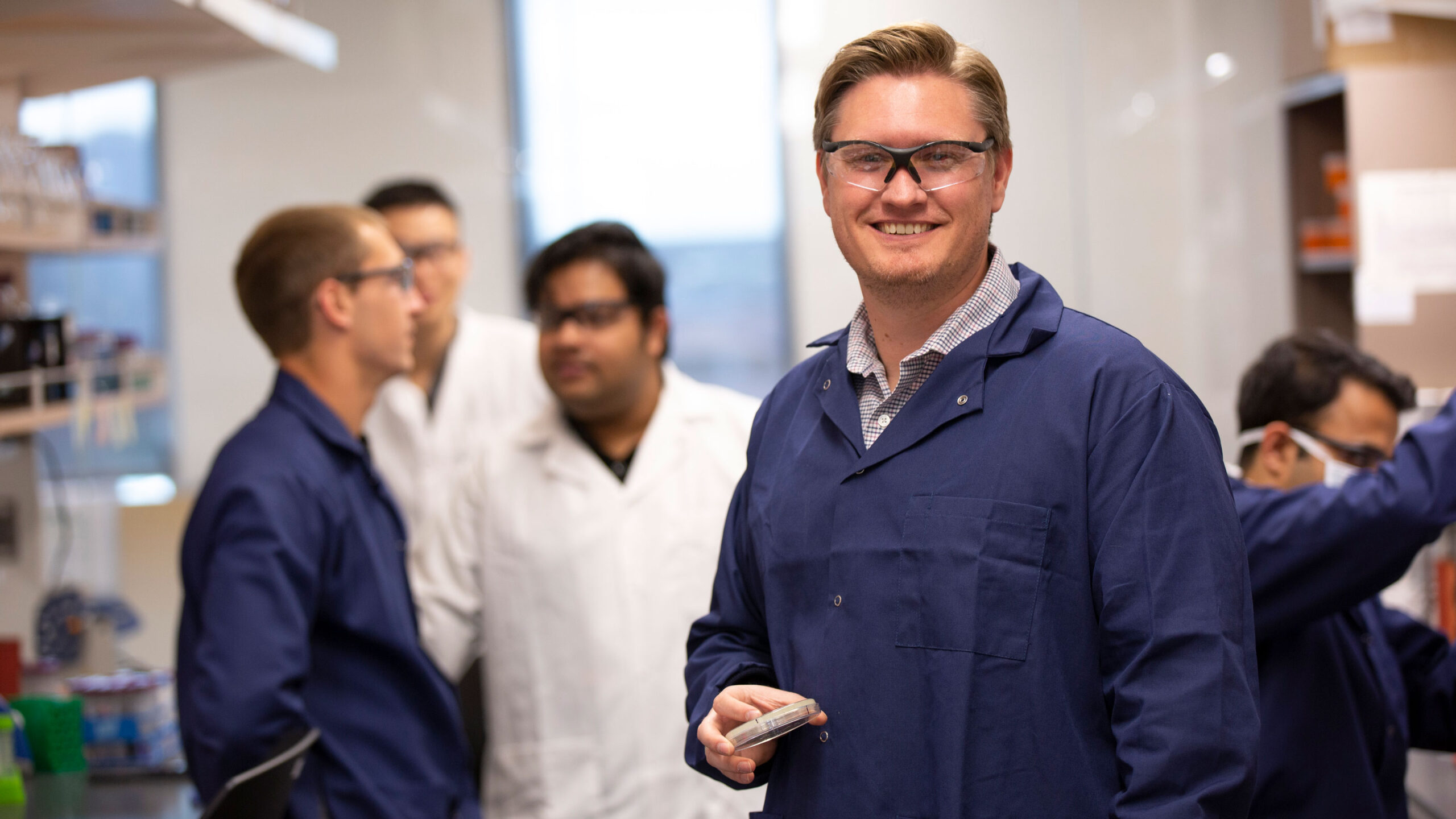
Above: Brent Nannenga leads his engineering lab group in refining the method of microcrystal electron diffraction, an innovative microscopy technique that is advancing discovery in fields ranging from photovoltaics to pharmaceuticals. Nannenga’s pioneering work has been honored with an early career award from the American Crystallographic Association. Photographer: Erika Gronek/ASU
As a word, crystallography sounds like the study of crystals. And as a branch of science, it did begin by examining the external forms of crystals and minerals. But current work focuses on discerning internal structures — the arrangement and bonding of atoms and molecules — for countless substances. The results inform research in biology, chemistry, geology, physics and other fields.
“Figuring out these tiny structures is typically accomplished by the use of X-rays,” says Brent Nannenga, an associate professor of chemical engineering in the Ira A. Fulton Schools of Engineering at Arizona State University. “That’s been the standard approach for more than half a century. However, electrons can also be used to collect data from crystals.”
Nannenga is referring to a technique called microcrystal electron diffraction, or MicroED. It’s a form of cryogenic electron microscopy, or cryo-EM, which is the near-atomic level examination of frozen substances placed in an electron microscope. For the work of crystallography, MicroED has an advantage over traditional X-ray diffraction in that it can yield high-quality data from much tinier crystals — many millions of times smaller.
“This is a good thing since it can be hard to grow crystals of many substances,” Nannenga says. “For example, it’s very difficult to study membrane proteins because you can’t often generate crystals; and when you do, they are very tiny. So, MicroED opens a lot of opportunities.”
Nannenga understands the potential of this innovative technique because he is one of the people who developed it. And as recognition of such important work, Nannenga is being honored with the 2022 Margaret C. Etter Early Career Award from the American Crystallographic Association. This professional recognition celebrates outstanding achievement and exceptional potential in crystallographic research by scientists in the first decade of their independent work.
“I am very grateful to receive this award, and not least because of the support I received from colleagues,” Nannenga says. “One of them was a big name in electron microscopy and a research mentor for me here at ASU. That was John Spence, who passed away very recently. He was very kind to help me as he did.”
Another key supporter has been Tamir Gonen, a renowned biochemist and biophysicist with whom Nannenga worked on microcrystal electron diffraction during his post-doctoral research at the Janelia Research Campus of the Howard Hughes Medical Institute in Virginia.
“Brent is one of the most creative, focused and hardworking early-stage scientists I know,” says Gonen, who now serves in the David Geffen School of Medicine at the University of California, Los Angeles. “He is certainly one of the brightest people to come out of my lab, and his work in developing MicroED has been transformative. It’s for these reasons that I, and others including the late John Spence, nominated him for the Etter Award in crystallography.”
Nannenga’s achievements with MicroED are impressive, but he says more work needs to be done to advance the use of this technology, particularly in terms of method development. It’s central to the work of his lab group at the School for Engineering of Matter, Transport and Energy, one of the Fulton Schools at ASU.
“We’re focused on sample handling right now. Getting samples into the microscope to collect data can be tricky because some of them are very sensitive or they are grown in very difficult conditions,” he says. “Also, we want to improve our processing methods to get even better structures from the electron diffraction data that we collect.”
Nannenga has been very pleased with the enthusiastic reception of MicroED by both the scientific community and industry. He is processing samples from Belgium, Spain, Russia and many other countries around the world.
“That’s not always the case for new developments,” he says. “But there are already companies marketing products derived from this innovation. It supports a broad range of innovation from photovoltaics to pharmaceuticals. So, it’s all very exciting. I didn’t anticipate that this work would have so much impact.”
Nannenga was previously acknowledged for his groundbreaking electron diffraction work as the recipient of a 2020 Burton Medal from the Microscopy Society of America. Additionally, he won a 2020 Faculty Early Career Development Program (CAREER) Award from the National Science Foundation for the application of cryo-electron microscopy to better understand protein structure and inorganic material synthesis function.
The American Crystallographic Association will present the Etter Award to Nannenga at the organization’s annual meeting in Portland, Oregon, next summer.


